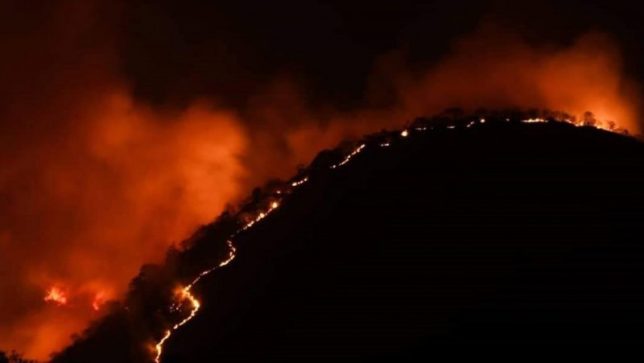
Feeling out the new framework for biodiversity protection with the Kunming-Montreal pact
Well, they got there. After years-long delays due to the COVID-19 pandemic, a relocation from Kunming, China to Montreal, Canada, and following weeks of late-night negotiations peppered with walkouts and protests, a ‘new deal’ for biodiversity has been struck: on 19 December 2022, the Kunming-Montreal Global Biodiversity Framework (GBF) was adopted as the outcome of the 15th meeting of the Conference of the Parties (COP15) to the UN Convention on Biological Diversity (UNCBD).
The failure of the framework’s predecessor – none of the biodiversity targets set at Aichi in 2010 were reached by the 2020 deadline – added to the fraught tenure of the negotiations. The new framework isn’t perfect, as I’ll explain, but there are some important elements that, if implemented effectively and equitably, can make genuine impact.
Perhaps most notable is the target of protecting 30 percent of Earth’s land and sea by 2030. The global nature of the target means that the focus will be on the most biodiverse countries protecting key areas such as the tropical forests of the Amazon, the Congo Basin, and Indonesia – all areas where the Center for International Forestry Research and World Agroforestry (CIFOR-ICRAF) has a strong presence and strong partnerships.
Given it took the global community almost six decades to protect 17% of the planet, this is a lofty goal that will require coordinated – and careful – action. Much protected area creation in the past has been propelled by colonialist ‘fortress conservation’ approaches that fail to take the rights, territories, and contributions of Indigenous Peoples and local communities into account. Such restrictive approaches have had dire consequences for people and nature, with both biodiversity and livelihoods crumbling as a result.
As such, the strong language on these issues in the new framework – which reaffirms the protection of Indigenous rights and territories throughout its 23 targets and four goals, and purports to ensure their voice in decision-making – is to be commended, though as always it will be crucial to pay careful attention to how and if this plays out on the ground. As much of CIFOR-ICRAF’s work highlights, it’s critically important to recognize human agency in the shaping of sustainable landscapes. As a global community, we need to become more skillful at differentiating between human activity that has been harmful and natural resource use that has been, is, or can be sustainable.
On that note, the agreement to develop a multilateral benefit-sharing and funding mechanism, to help put sovereignty over digital genetic code in the hands of those in whose land and sea-scapes it resides (rather than those of biopirates and corporations) is also significant. It was heartening, too, to see a new standalone target on gender equality and women and girls’ empowerment, and the inclusion of the term ‘gender-responsive’ in place of the weaker ‘gender-sensitive’. Also welcome is the (long overdue) target of reducing harmful subsidies for fisheries, agriculture and fossil fuels by at least USD 500 billion annually by 2030: right now, at least USD 1.8 trillion of such subsidies are financing the destruction of biodiversity each year.
Among these victories, it was disappointing to see the watering-down of language promoting and centering agroecology in the framework’s sustainable agriculture target. The final text reads, “The application of biodiversity-friendly practices, such as sustainable intensification, agroecological and other innovative approaches”; sustainable intensification, however, causes significant biodiversity loss and has been shown not to stop agricultural expansion. Another concern is that over-emphasis on protected areas through the 30×30 target could take away from necessary attention on developing biodiverse, inclusive, and resilient food systems – a subject on which CIFOR-ICRAF has a combined 70 years of international experience. Agroforestry and trees on farms, for instance, can play a significant role in restoring and enhancing ecosystems while producing critical food and nutrition.
Discussions on who will foot the bill for biodiversity conservation were also fraught, and wealthier countries’ reluctance to front up prompted the walk-out of delegates from over 70 countries in the Global South at one stage. In the end, the financial target of USD 200 billion a year for conservation initiatives – a sum determined to be critical for the framework’s success – was reached, through some developing countries such as the Democratic Republic of the Congo (DRC), Brazil and Malaysia expressed disappointment that richer ones did not offer up a larger amount, and that a new fund for biodiversity was not established.
So, now that we have an agreed path towards halting the loss of species and protecting the world’s remaining biodiversity, what lies ahead? By addressing the current polycrisis – biodiversity loss, climate crisis, growing inequalities, broken food systems, unsustainable supply chains – simultaneously through transdisciplinary science, CIFOR-ICRAF is delivering holistic solutions at scale in priority areas with the greatest potential for positive impact: sustainably managing multiple-use landscapes, promoting conservation in productive landscapes through agroecological approaches, and preserving local and global livelihoods. We will continue working to reverse negative environmental trends by generating evidence of the enormous value of trees – in forests, on farms, and across landscapes.
Robert Nasi is the Director General of the Center for International Forestry Research (CIFOR)

